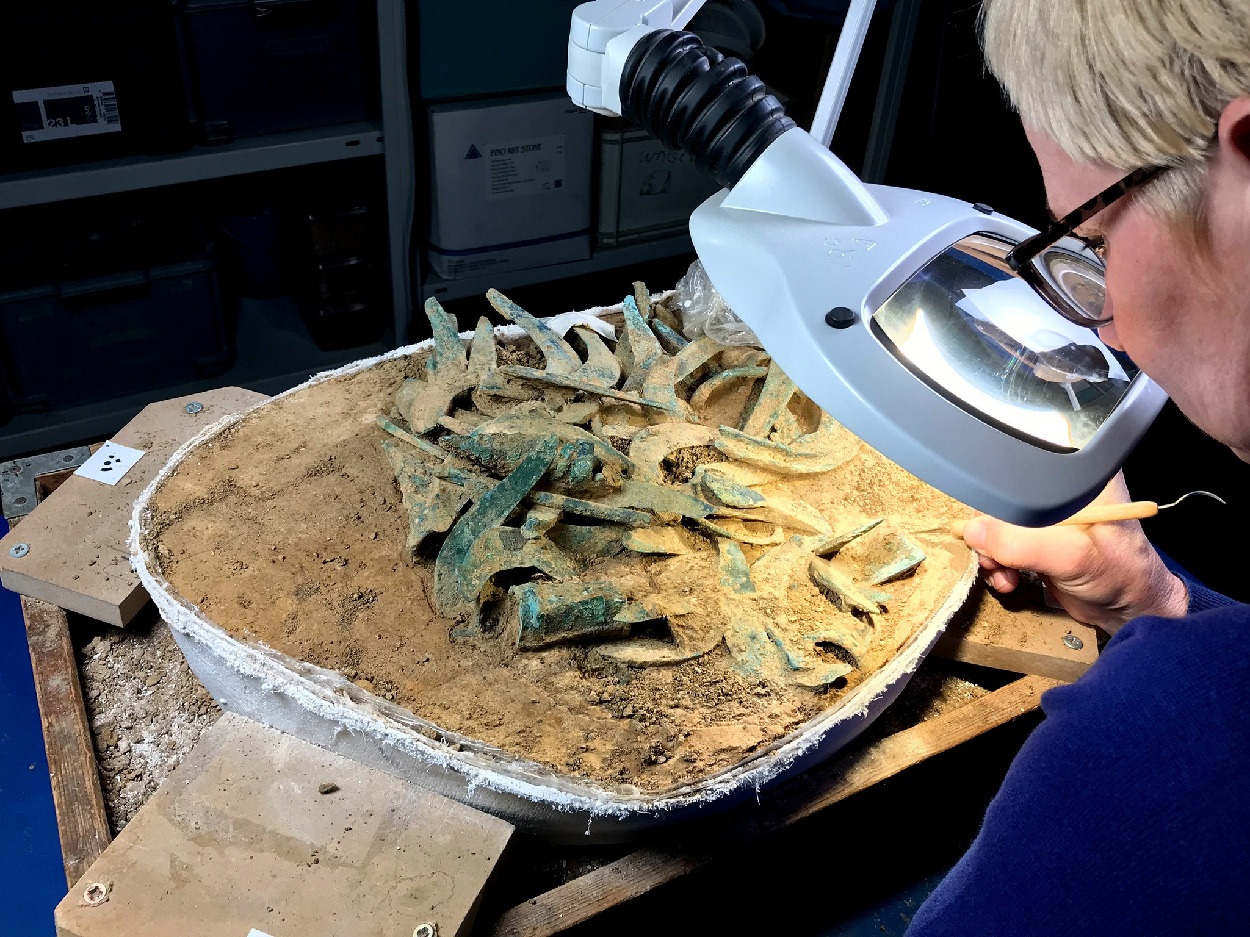Archaeologists in eastern Germany have uncovered the largest Bronze Age hoard ever found in Upper Lusatia and the second largest in all of Saxony.
The hoard was discovered in the Klein Neundorf suburb of Görlitz and consists of 310 bronze objects dating to the 9th century BC.
The site of the discovery has been known since 1900, when local children stumbled upon three bronze daggers while harvesting potatoes.
At the time, one of the daggers went missing, while the other two entered the collection of the Görlitz Museum in 1905. Tragically, one of these vanished during World War II, leaving just a single dagger surviving today.
Dr. Jasper von Richthofen, director of the Görlitz Collections, organised a systematic dig in cooperation with the Saxon State Office for Archaeology.
This study initially unearthed bronze sickle fragments on the western edge of the site, while further investigations revealed 108 disturbed objects scattered in the plough zone.
Eventually, the team uncovered a concentration of artefacts still in their original context, which was removed as a soil block to conduct a micro-excavation in laboratory conditions.
According to the Görlitz Museum, the hoard includes tools, weapons, jewellery, garment fittings, and raw metal ingots known as cast cakes.
The most numerous items are sickles, with 136 examples, followed by 50 axes. Each stage of the excavation was documented through photogrammetry, allowing researchers to build a precise 3D model that preserves the objects’ original arrangement.
Among the most striking finds is a sword broken into four pieces. Two of the breaks are ancient, showing the weapon was intentionally deposited in a fragmented state.
When reassembled, the sword measures just 44 cm and has a pommel constructed from two bronze shells encasing an organic disc, possibly of bone or ivory. Although unique in form, experts believe the sword likely originated in southern Germany, indicating long-distance connections across Central Europe during the late Bronze Age.
Header Image Credit : Saxony State Office for Archaeology
Sources : Saxony State Office for Archaeology







